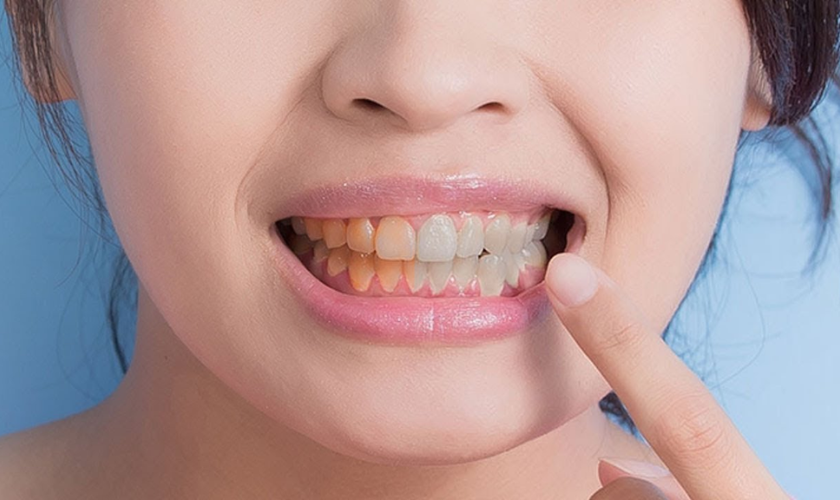You’ve just spent time and money on teeth whitening, expecting a bright, dazzling smile. But when you check the mirror, those pesky yellowish hues still linger.
Frustrating, right?
You’re not alone—many people wonder why their teeth don’t turn out as white as they hoped after a whitening treatment. It can be discouraging, especially when you’ve followed all the right steps.
Before you give up on achieving that perfect smile, let’s dive into what might be causing the issue. Understanding the factors that affect whitening results can help you manage your expectations and discover what more you can do to get closer to the smile you’ve always wanted.
From the depth of stains to your daily habits, several elements play a role in how white your teeth can truly become.
Understanding the Types of Stains
Teeth discoloration isn’t a one-size-fits-all situation. There are two main types of stains that can affect the color of your teeth: extrinsic and intrinsic. Extrinsic stains sit on the surface of your teeth and often come from foods, drinks, or smoking. Coffee, tea, red wine, and tobacco are common culprits. These stains are easier to treat because they haven’t penetrated deep into the tooth structure. Regular brushing, professional cleanings, and over-the-counter whitening products can often handle extrinsic stains effectively.
On the other hand, intrinsic stains are trickier. They develop within the tooth itself, often caused by factors like aging, trauma, or certain medications. If you had a high fluoride intake as a child or used tetracycline antibiotics, you might notice these deeper stains. Intrinsic stains don’t respond as well to traditional whitening methods, making them harder to eliminate. Understanding the type of stain you’re dealing with is crucial for setting realistic expectations and choosing the right whitening approach.
To prevent further staining:
- Limit consumption of staining foods and drinks: Reducing intake of coffee, tea, and wine can help maintain a brighter smile.
- Quit smoking or using tobacco: This will not only improve oral health but also prevent yellowing.
- Brush and rinse after consuming stain-causing foods: This can help reduce the chances of new stains forming.
Natural Tooth Color and Genetics
Sometimes, your teeth remain yellow because of genetics. Not everyone’s teeth are naturally bright white. Some people have teeth that are more yellow or grey due to the thickness and shade of their enamel and dentin.
Key points to understand:
- Enamel thickness varies: Thinner enamel allows more of the dentin’s yellowish color to show through.
- Dentin shade influences tooth color: The underlying dentin, which is naturally yellow, can make teeth appear less white.
- Genetics play a significant role: Your natural tooth color is largely determined by your genes.
Incomplete Whitening Procedures
Yellow teeth after whitening may also indicate incomplete or inadequate treatment. Whitening products and procedures vary in strength and effectiveness. Over-the-counter products often don’t provide the same results as professional treatments.
Consider these factors:
- Treatment duration: Not all whitening sessions last long enough to penetrate deep stains.
- Product strength: Professional treatments typically use stronger bleaching agents than at-home kits.
- Technique matters: How the whitening product is applied can influence results.
Enamel Erosion and Tooth Health
If your teeth still appear yellow after whitening, it might be due to enamel erosion. The enamel is the outer layer of your teeth, and when it wears down, the underlying dentin, which is yellow, becomes more visible. Erosion can happen due to acidic foods, aggressive brushing, or conditions like acid reflux.
Steps to protect your enamel:
- Avoid acidic foods and drinks: Limit intake of citrus, soda, and other acidic substances that can erode enamel.
- Use a soft-bristled toothbrush: This helps prevent enamel wear from harsh brushing.
- Stay hydrated: Saliva helps neutralize acids in the mouth, so drink plenty of water throughout the day.
Post-Whitening Care and Maintenance
Keeping your teeth white after a whitening procedure requires ongoing care. Without proper maintenance, your teeth can quickly revert to their pre-whitening color.
Key maintenance tips include:
- Regular brushing and flossing: Maintain a consistent oral hygiene routine to remove daily stains.
- Use whitening toothpaste: This can help prolong the effects of your whitening treatment.
- Avoid stain-causing foods and drinks: Limit your intake of coffee, tea, red wine, and similar items.
Understanding why your teeth remain yellow after whitening can help you address the underlying causes effectively. Whether it’s due to stubborn stains, genetics, enamel erosion, or incomplete treatments, there are steps you can take to improve your smile. By adopting proper maintenance habits and considering professional advice, you can achieve and maintain the bright, white teeth you desire. Remember, a healthy smile starts with consistent care and the right approach to whitening.




